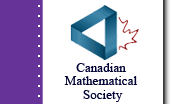|
8 items are filed under this topic.
 |
 |
 |
 |
 |
 |
 |
 |
|
A magic square |
2010-02-18 |
 |
From Mika:
place the integers from -5 to +10 in the magic square so that the total of each row, column, and diagonal is 10.
Answered by Tyler Wood. |
 |
 |
 |
 |
 |
|
A 4 by 4 magic square |
2007-11-21 |
 |
From sue:
This is for my 10 year old nephew. His math question is: he has a 4X 4 magic square. The top squares are from left to right: 359,356,353,366. He says that columns are supposed to equal 796. We can't figure it out and would really appreciate any help we could get.
Answered by Penny Nom. |
 |
 |
 |
 |
 |
|
Magic squares |
2001-11-17 |
 |
From A student:
7th grader wanting to find solution to magic square:
place the integers from -5 to +10 in the magic square so that the total of each row, column, and diagonal is 10. The magic square is 4 squares x 4 squares.
Answered by Penny Nom. |
 |
 |
 |
 |
 |
|
Pythagoras & magic squares |
2001-10-09 |
 |
From John:
My grandson became intrigued when he recently 'did' Pythagoras at elementary school. He was particularly interested in the 3-4-5 triangle, and the fact that his teacher told him there was also a 5-12-13 triangle, i.e. both right-angled triangles with whole numbers for all three sides. He noticed that the shortest sides in the two triangles were consecutive odd numbers, 3 & 5, and he asked me if other right angled triangles existed, perhaps 'built' on 7, 9, 11 and so on. I didn't know where to start on this, but, after trying all sorts of ideas, we discovered that the centre number in a 3-order 'magic square' was 5, i.e. (1+9)/2, and that 4 was 'one less'. Since the centre number in a 5-order 'magic square' was 13 and that 12 was 'one less' he reckoned that he should test whether a 7-order square would also generate a right-angled triangle for him. He found that 7-24-25, arrived at by the above process, also worked! He tried a few more at random, and they all worked. He then asked me two questions I can't begin to answer ... - Is there a right-angled triangle whose sides are whole numbers for every triangle whose shortest side is a whole odd number? and
- Is each triangle unique (or, as he put it, can you only have one whole-number-sided right-angled triangle for each triangle whose shortest side is an odd number)?
Answered by Chris Fisher. |
 |
 |
 |
 |
 |
|
A 4-by-4 magic square |
2000-02-06 |
 |
From Maureen Fitzsimons:
I need to create a 4x4 grid using numbers .1, .2, .3, .4, ....1.1, 1.2, 1.3,1.4,1.5,1.6 the sum of the number diagonally, horizontally and across all equal 3.4
Answered by Penny Nom. |
 |
 |
 |
 |
 |
|
Magic Square |
1999-09-18 |
 |
From Nick Grundberg:
Using the this square, fill in the squares using the numbers 1 through 9 just once to make all the sums equal in all directions, across, down, and diagonally. Then tell what the sum of the magic square equals.
Answered by Penny Nom. |
 |
 |
 |
 |
 |
|
Magic Squares |
1999-02-11 |
 |
From Katie Powell:
My name is Katie Powell. I'm in the 7th grade, taking Algebra. I live in Houston, Texas. My problem is this: "Use the numbers 1-9 to fill in the boxes so that you get the same sum when you add vertically, horizontally or diagonally." The boxes are formed like a tic-tac-toe -- with 9 boxes -- 3 rows and 3 columns. Can you help?
Answered by Jack LeSage. |
 |
 |
 |
 |
 |
|
Magic Square |
1995-10-20 |
 |
From Marianne and Carrie:
How can an 8 by 8 square have the same area as a 5 by 13 rectangle?
Answered by Denis Hanson. |
 |
 |
|

